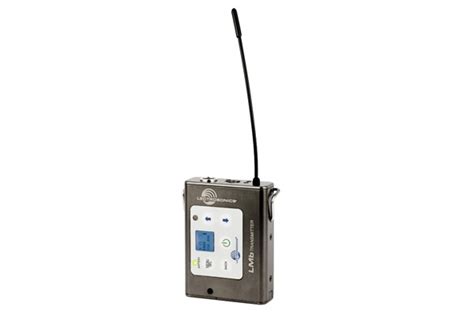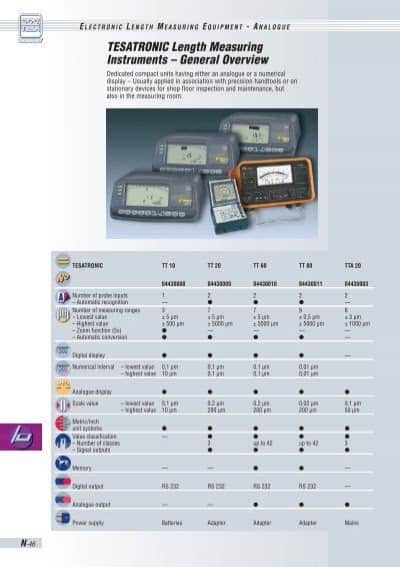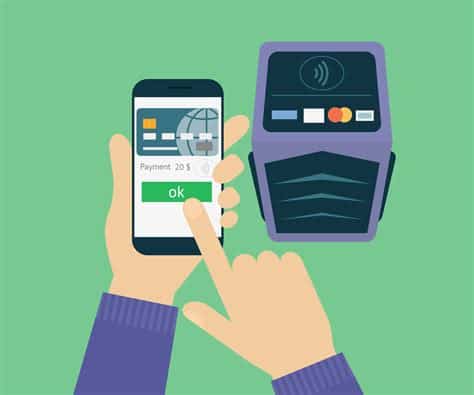What Makes a Successful Lectronic Product?
When setting out to design a new lectronic device, there are several key factors that contribute to the product’s ultimate success in the marketplace:
| Factor | Description |
|---|---|
| Functionality | Does the product effectively solve a real problem or address a clear need for the target customer? |
| Usability | Is the device intuitive and easy to set up and operate, with a well-designed user interface? |
| Performance | Does the lectronic product work consistently and reliably, with fast response times and minimal downtime? |
| Aesthetics | Is the industrial design sleek, attractive and reflective of the brand identity? |
| Differentiation | Does the product stand out from the competition and offer unique value to the customer? |
| Affordability | Is it priced competitively for the target market and perceived as a good value? |
By focusing on these core attributes from the outset, you greatly increase the odds of developing a lectronic product that resonates with customers and achieves commercial success. Of course, the ultimate measure is strong sales, customer satisfaction, brand loyalty and profitability for the company.
Case Study: The Apple iPhone
One of the most successful lectronic product introductions of all time was the original Apple iPhone in 2007. It showcased many of the above success factors:
-
Functionality: The iPhone was a revolutionary smartphone that put the internet, email, music, and a host of apps in your pocket. It solved myriad problems and enabled new possibilities for mobile users.
-
Usability: The touchscreen interface and intuitive iOS operating system made the iPhone amazingly easy to use compared to keypad-based smartphones of the time. It set a new standard for simplicity.
-
Performance: While not perfect, the iPhone delivered fast web browsing, smooth operation, and consistent reliability that surpassed most of the competition.
-
Aesthetics: The sleek glass and aluminum design was a work of art – thinner and more attractive than other smartphones on the market. It became an iconic symbol of Apple’s design prowess.
-
Differentiation: The iPhone stood out as a groundbreaking, category-defining product that made rival devices look antiquated. It offered unique innovations like the App Store.
-
Affordability: While pricey, the iPhone delivered significant value and utility to justify the cost. Carrier subsidies also made it attainable for a wide audience.
The iPhone certainly wasn’t perfect, but it got the core elements right and absolutely nailed the market timing and zeitgeist. It went on to become one of the most successful lectronic products in history.
The Lectronic Product Development Process
Developing a great lectronic product doesn’t happen by accident. It requires thoughtful planning, cross-functional collaboration, and disciplined execution across a multi-phase process:
Phase 1: Ideation
Every lectronic product starts as an idea. The ideation phase is about generating, capturing, filtering and prioritizing myriad ideas to find the most promising product opportunities. Key activities include:
- Uncovering customer needs, pain points and desires
- Analyzing market trends and competitive landscape
- Brainstorming potential solutions and product concepts
- Consulting diverse sources of insight and inspiration
The goal is to identify an attractive opportunity area in which you can deliver a differentiated product that solves a real problem for a meaningful market segment. Tools like design thinking, jobs-to-be-done analysis, and lean startup methods can help guide effective ideation.
Phase 2: Definition
Once you’ve honed in on a winning product concept, it’s time to define the product in greater detail. The definition phase translates the idea into a tangible product vision, target specification and business case. Key deliverables often include:
- Product requirements document (PRD)
- User personas and use case scenarios
- Information architecture and user experience map
- Industrial design concepts and form factor
- Technical feasibility assessment
- Business model and financial forecast
The goal is to paint a vivid picture of the envisioned user experience while validating that the concept is desirable, feasible, and viable before investing in full development. Creating alignment among stakeholders at this stage is critical.
Phase 3: Development
The development phase is where the rubber meets the road and the envisioned product becomes a reality. Depending on the product complexity and scale, development typically entails several parallel workstreams:
| Workstream | Activities |
|---|---|
| Hardware Engineering | Electrical, mechanical and industrial design, component selection, schematic capture, PCB layout, prototype builds, testing and verification |
| Software Engineering | Embedded firmware, mobile app, cloud backend, API integrations, UI design, coding, debugging and QA |
| User Experience Design | Interaction design, visual design, user research, usability testing, finalization of all UX assets and specifications |
| Quality Assurance | Test planning, test case development, bug tracking, regression testing, integration and system testing, field testing |
| Supply Chain | Component sourcing, contract manufacturer selection, tooling design, pilot production runs, process refinement, quality control |
| Regulatory Compliance | Safety testing, EMC testing, certification (FCC, CE, UL, etc.), packaging and labeling requirements |
Strong project management is essential to coordinate all of these interlocking pieces and keep development on track. An agile, cross-functional approach can help navigate the inevitable twists and turns along the way.
Phase 4: Deployment
The deployment phase is where the lectronic product is released into the wild for customers to enjoy. Key activities include:
- Regulatory approval and certification
- Ramping up production volume
- Final packaging and logistics
- Sales channel development
- Marketing launch campaign
- Customer support infrastructure
- Ongoing software maintenance and updates
The goal is a smooth launch that generates buzz, drives sales, and delights customers right out of the gate. But the work isn’t over – soliciting feedback, monitoring quality, and supporting customers are critical post-launch priorities.
Phase 5: Disposition
Even the most successful products eventually reach the end of their lifecycle. The disposition phase is about responsibly managing the decline and discontinuation of the product. Key considerations include:
- Adjusting production volumes based on declining demand
- Clearing out unsold inventory and honoring warranties
- Communicating plans to phase out the product
- Transitioning customers to newer replacement products
- Properly disposing of returned and unsold units
- Capturing lessons learned for future product iterations
With good planning, the disposition phase allows for a graceful exit that maintains customer goodwill and preserves brand reputation for the next lectronic product launch.

Lectronic Product Design Best Practices
Within each phase of the development process, there are several design best practices that can improve your odds of success:
Keep the User at the Center
The most successful lectronic products are designed with a deep, empathetic understanding of the target user and their needs. Regularly engage with customers and seek their input via:
- User interviews and focus groups
- Field observation and ethnographic research
- Usability testing of prototypes
- Beta tests and early access programs
- Net Promoter Score and satisfaction surveys
By keeping the user at the center of the design process, you are more likely to create a lectronic product that resonates and exceeds their expectations.
Strive for Simplicity
Lectronic products are often complex systems with immense technical sophistication under the hood. But that complexity should be hidden from the user behind an intuitive, effortless interface. Some key ways to achieve simplicity:
- Streamline the out-of-box experience and initial setup
- Reduce clutter and use progressive disclosure
- Make the most common tasks easy and obvious
- Use plain language and avoid jargon
- Provide helpful defaults but allow customization
- Design for the novice but enable power user shortcuts
Ultimately, the less friction there is for the user to derive value from your lectronic product, the better the experience will be.
Design for Manufacturing
The most brilliant lectronic product concept is meaningless if it can’t be efficiently manufactured at scale. Successful products are designed from the outset with manufacturing and assembly in mind, via practices like:
- Selecting standard off-the-shelf components where possible
- Minimizing the overall number of parts in the assembly
- Designing parts for ease of fabrication and assembly
- Performing design for manufacturing (DFM) analysis
- Building and testing pre-production prototypes
- Closely collaborating with the contract manufacturer
The earlier you consider manufacturing implications, the smoother the transition to mass production will be.
Balance Form and Function
An elegant industrial design can make your lectronic product stand out from the crowd and build a premium brand identity. But if it comes at the cost of performance, reliability or ergonomics, you may have gone too far. Great designs strike a balance between form and function, via:
- Aligning the design language with the brand identity
- Enabling effortless interactions with the right control placement
- Communicating status with at-a-glance feedback
- Ensuring durability for the expected usage environment
- Accommodating internal components and optimizing airflow
- Meeting any applicable regulatory and safety requirements
It’s a constant push and pull between the desires of industrial design, engineering, manufacturing and other stakeholders. Strong collaboration and management are key to find the sweet spot between them all.
Adopt Agile and Lean Principles
In a fast-moving industry like lectronics, speed and agility are critical to success. Many of the most innovative lectronic products were developed using agile and lean methodologies, which emphasize:
- Cross-functional collaboration and co-location
- Rapid prototyping and experimentation
- Timeboxed sprints with tangible deliverables
- Regular customer/stakeholder demos and feedback
- Flexible scope and requirements based on new learnings
- Minimal viable product (MVP) releases to validate assumptions
By adopting these principles, lectronic product teams can iterate faster, surface issues sooner, and ultimately deliver a better product to market in less time.

Trends in Lectronic Product Development
The world of lectronic product development is constantly evolving, with new technologies, tools and methodologies emerging all the time. Some of the key trends to watch include:
IoT and Connected Devices
The Internet of Things (IoT) is enabling a new generation of connected lectronic products that can sense, communicate and respond intelligently. From smart home devices to wearable health monitors to industrial equipment, IoT products are transforming industries and unlocking new business models.
Artificial Intelligence and Machine Learning
Artificial intelligence (AI) and machine learning (ML) are increasingly being embedded into lectronic products to enable more intelligent, adaptive and autonomous operation. From voice assistants to predictive maintenance to personalized user experiences, AI is expanding the art of what’s possible.
Augmented and Virtual Reality
Augmented reality (AR) and virtual reality (VR) are opening up new frontiers for immersive digital experiences. Lectronic products like smart glasses, headsets and haptic interfaces are enabling users to interact with digital content in more natural and intuitive ways, with applications spanning gaming, education, training, design and more.
Sustainability and Circular Economy
With growing concerns about electronic waste and environmental impact, there is increasing focus on designing lectronic products for sustainability, repairability and end-of-life recycling. Concepts like Modular design, use of recycled materials, and product-as-a-service business models are gaining traction in the industry.
Rapid Prototyping and Additive Manufacturing
Advances in 3D printing, laser cutting, and other rapid prototyping technologies are enabling lectronic product developers to iterate faster and more efficiently than ever before. Combined with the rise of makerspaces and online manufacturing platforms, it’s never been easier to go from idea to working prototype.
By staying on top of these and other trends, lectronic product companies can position themselves for success in an ever-changing technological landscape.

Frequently Asked Questions
How long does it typically take to develop a new lectronic product?
The development timeline can vary widely depending on the complexity of the product, the size of the team, and the manufacturing scale. Simple products may go from concept to launch in a matter of months, while more sophisticated systems can take a year or more. It’s important to be realistic about the schedule and build in appropriate buffers.
How much does it cost to develop a lectronic product?
As with the timeline, the cost of developing a lectronic product can vary widely based on factors like the bill of materials, the engineering requirements, the tooling and test processes, and the volume of production. Simple proof-of-concept prototypes may cost a few thousand dollars, while full-scale development of a complex product can easily run into the millions. It’s critical to develop a comprehensive budget and secure appropriate funding.
What are the most common mistakes in lectronic product development?
Some of the most common pitfalls include:
- Lack of clear product requirements and scope control
- Insufficient user research and validation of assumptions
- Underestimating the complexity of hardware/software integration
- Failing to design for manufacturing and assembly
- Inadequate testing and quality assurance
- Lack of cross-functional collaboration and communication
By being aware of these potential failure modes and proactively mitigating them, you can greatly improve the odds of a successful lectronic product development effort.
When should I file for UL/CE certification?
The short answer is as early as possible. Regulatory certification can often be a long lead time item, so it’s best to engage with the relevant testing labs and certification bodies early in the development process to understand the requirements and timeline. Trying to retrofit a nearly finished design for compliance can be costly and time-consuming.
What are some good resources for learning more about lectronic product development?
There are many great resources available, both online and in print. Some good places to start:
- Websites like Hackster.io, Instructables and Adafruit Learning System
- Books like The Hardware Startup by Renee DiResta, The Art of Electronics by Paul Horowitz, and Making Embedded Systems by Elecia White
- Conferences like Embedded Systems Conference, IoT World, and Consumer Electronics Show
- Courses on platforms like Coursera, Udemy and edX
- Local meetups, makerspaces and hardware accelerators in your area
The key is to never stop learning and connecting with others in the lectronic product development community. With the right skills, partners and mindset, you’ll be well on your way to launching that next great lectronic innovation.

No responses yet